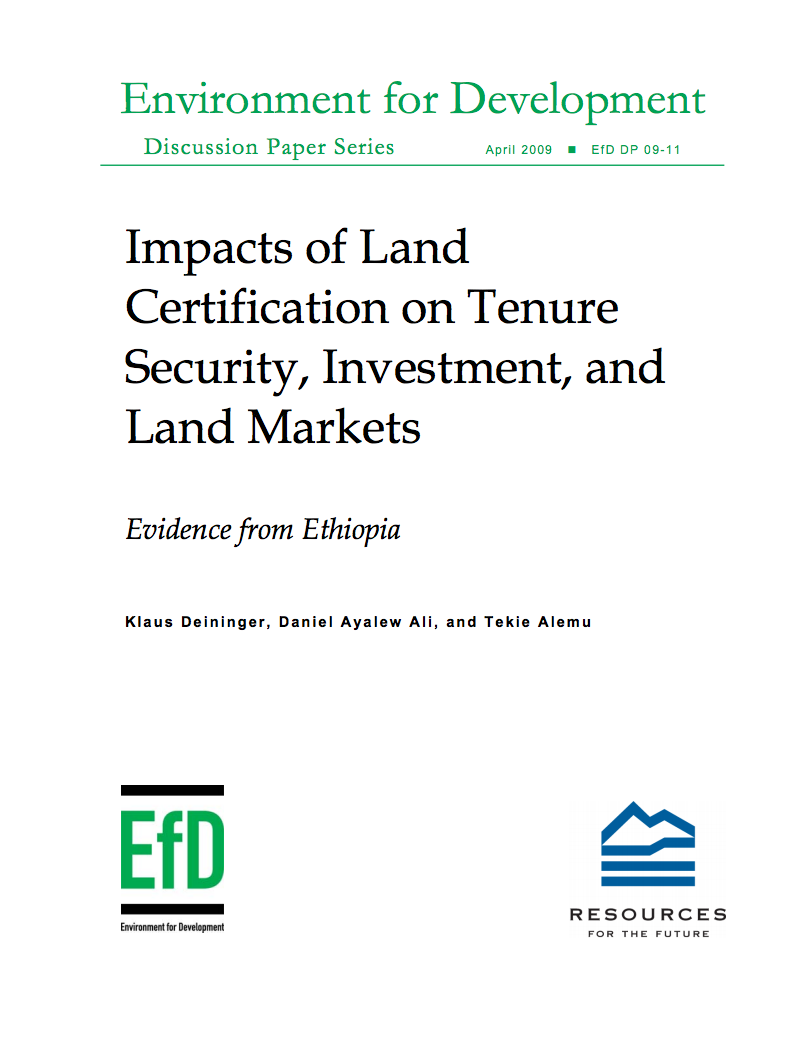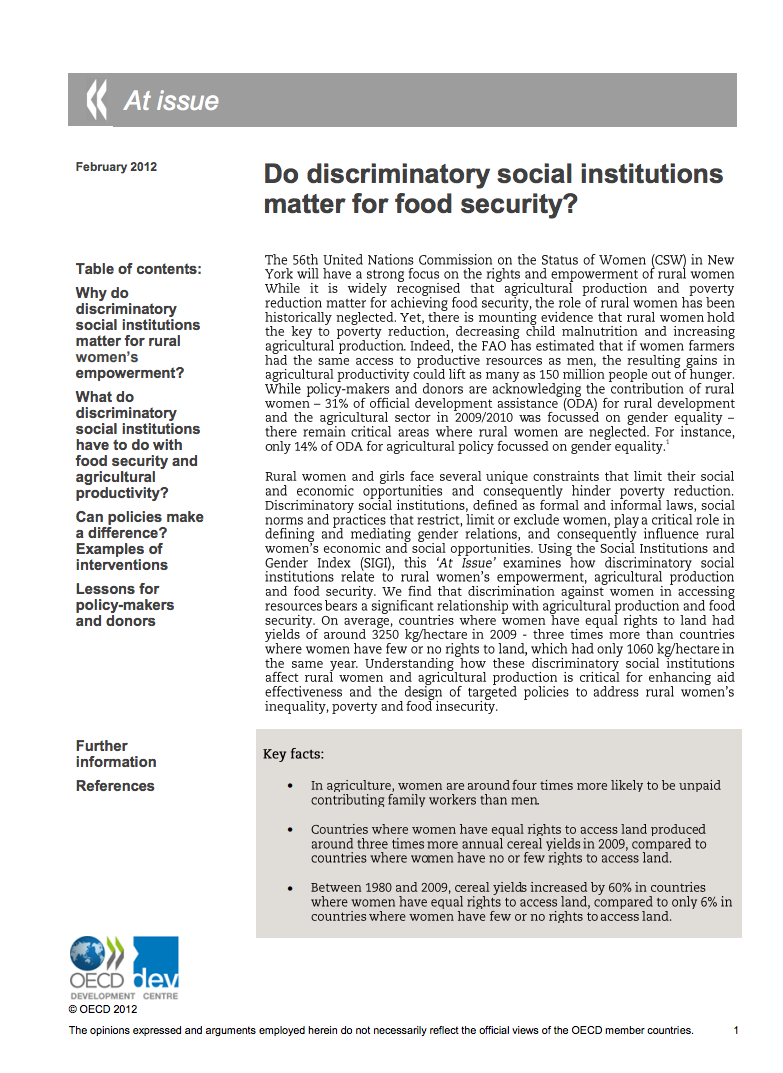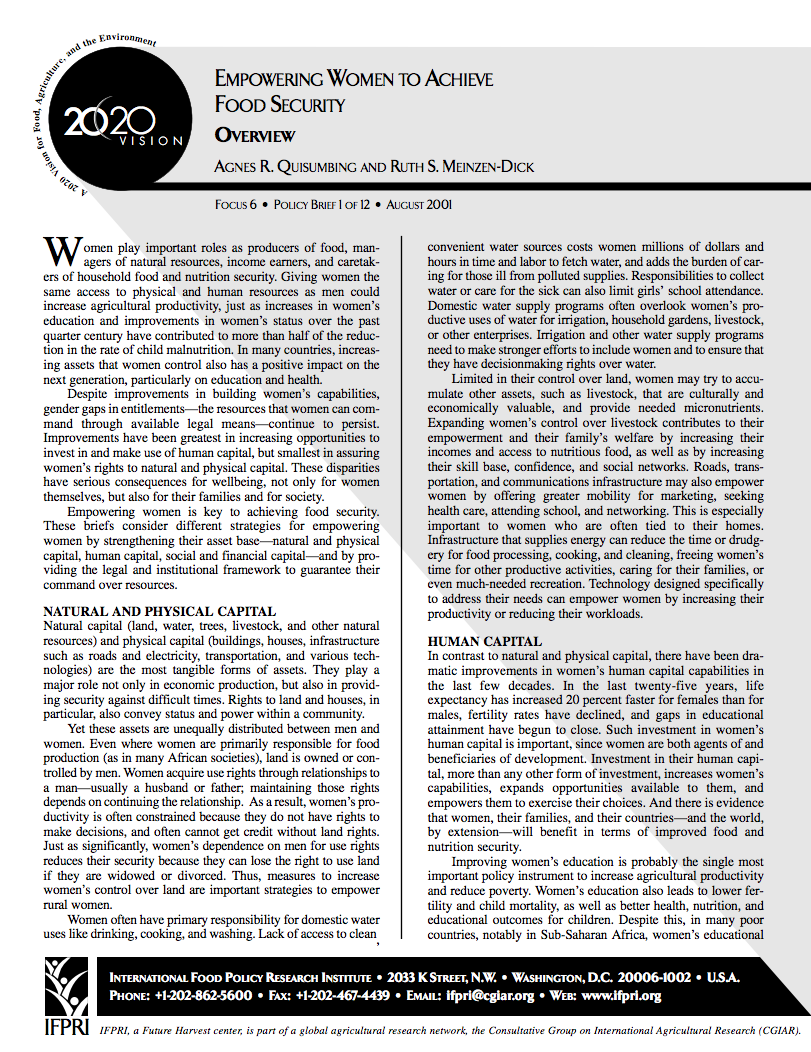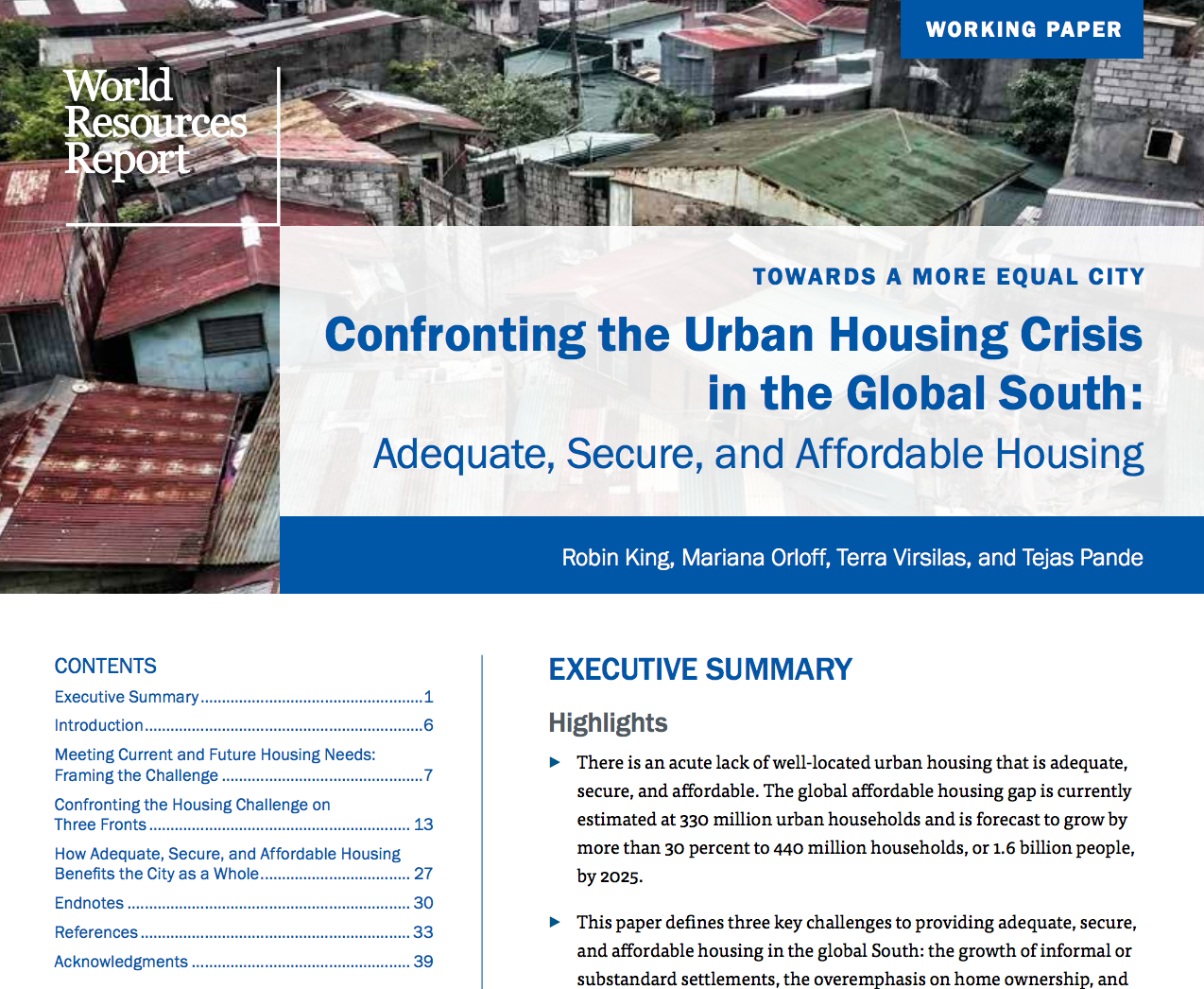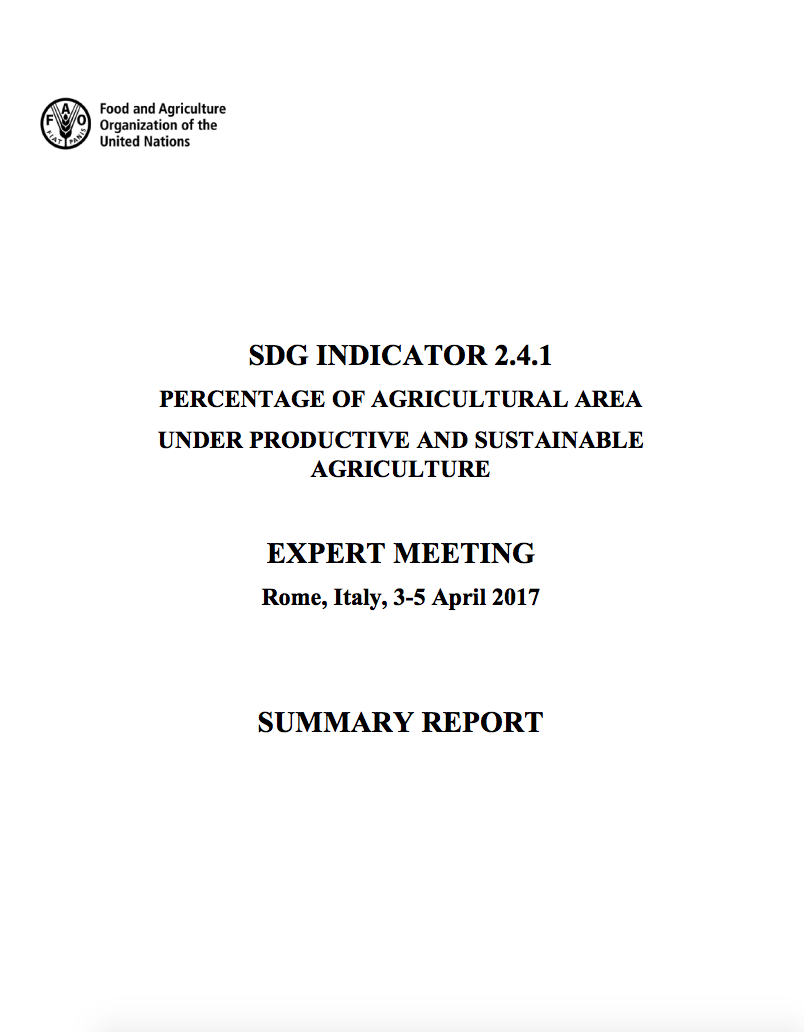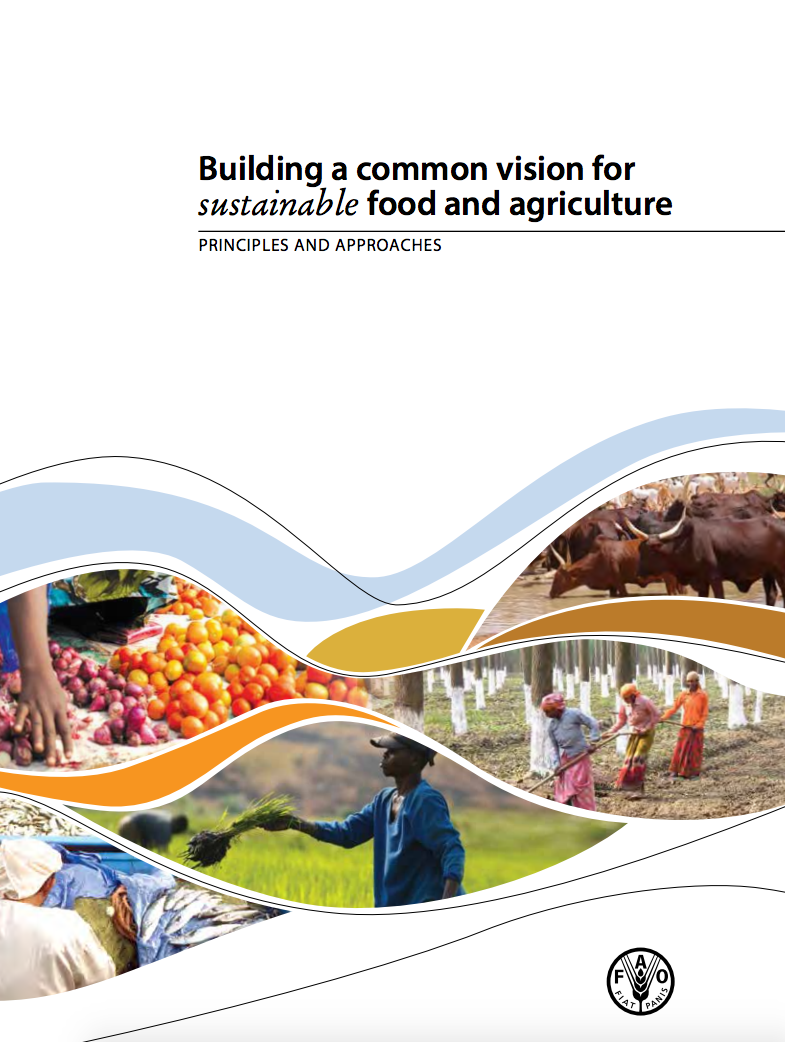Impacts of Land Certification on Tenure Security, Investment, and Land Markets
While early attempts at land titling in Africa were often unsuccessful, the need to secure land rights has kindled renewed interest, in view of increased demand for land, a range of individual and communal rights available under new laws, and reduced costs from combining information technology with participatory methods. We used a difference-in-difference approach to assess the effects of a low-cost land registration program in Ethiopia, which covered some 20 million plots over five years, on investment.

